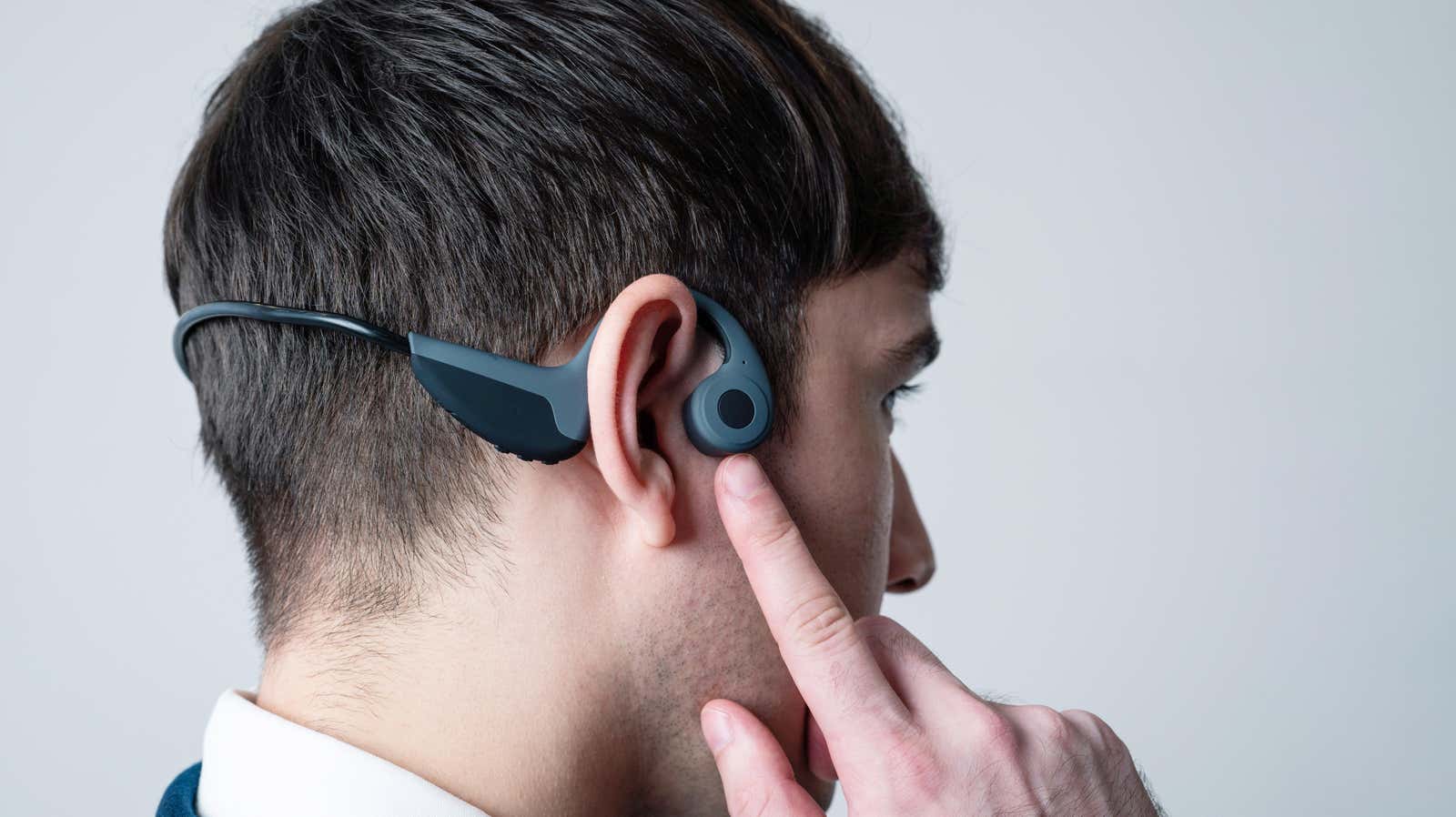Is It Worth Talking About Bone Conduction Headphones?

Would you try headphones that rest on your cheekbones and send sound to your ears through your bones? This is possible thanks to a technology called “bone conduction,” and it is most commonly used in consumer headphones. These products are not overly expensive and can be a good alternative for people who don’t like headphones or who want to try something different. Here’s what to consider before buying a pair yourself.
What is bone conduction?
Usually when you hear something, you hear it because the sound waves have passed through the air and have reached your ear. However, sound can also travel through liquids and solids – in fact, sound travels fastest through solids. If you put your ear to the train tracks, you would hear the approaching train much earlier than if you were just standing next to the tracks (not that we recommend that you check it out for yourself).
Our bones are also hard, so they can act as conductors of sound vibrations to our ears. Have you ever wondered why your voice sounds different to your ears when you speak, compared to when you hear a recording of your own voice? This is because you can hear a portion of your own voice being transmitted through your bones, which, of course, no one can hear.
How do bone conduction headphones work?
Bone conduction headphones bypass the outer ear completely – you will usually see them placed on your cheekbones to transmit sound vibrations to your inner ear. This means that if you have normal hearing, you will be able to clearly hear the sounds around you while continuing to listen to music, podcasts, or other sound with bone conduction headphones. This is especially useful in situations where you need to be aware of other sounds around you, such as walking or running outdoors. Bone conduction technology is also useful for some hearing impaired people – this technology is used in some types of hearing aids.
Bone conduction critics point out that the design of these headphones will not “cover” your ears like traditional headphones do, so the sound quality will not be as good. And since these headphones sit on your cheekbones, you may find it uncomfortable or impractical to use them during intense physical activity.
These types of headphones, such as open-back headphones, also tend to leak sound, so people around you can hear what you are listening to. These are worth considering if you’re tempted to use them in quiet, confined spaces like a library or an airplane.
Another problem you may encounter with bone conduction headphones is vibration itself – since these products transmit sound through your bones, you constantly feel vibrations in your skull. How unpleasant these vibrations are depends on the person.
Should you buy bone conduction headphones?
The answer to this question is subjective and depends on the use of headphones, needs and willingness to try different technologies. For most people, they are not considered a necessity, but in some situations they can be useful, including swimmers using waterproof versions, people with hearing impairments, and those who cannot wear normal headphones due to skin irritation. or problems with dizziness.
All in all, a set of bone conduction headphones will set you back $ 50 to $ 200 , and some brands like Aftershokz specialize in bone conduction headphones.
If vibration isn’t for you, headphones like the Bose Sport Open might be an alternative – they offer some of the benefits of bone conduction (they fit easily into the ear and don’t block the ear canal) minus the vibration. …